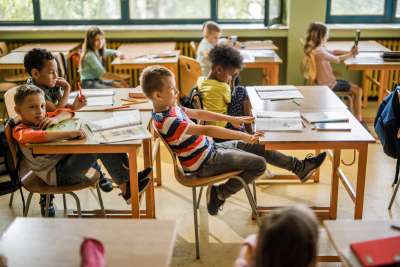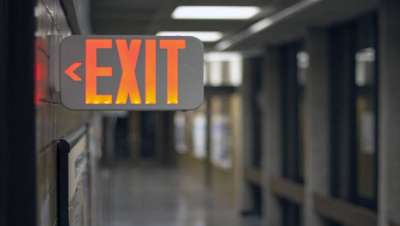Impact of Disaster on Students with Exceptionalities
The effects of disaster can have far-reaching impacts on individuals with disabilities, and disasters, in themselves, can result in disabilities (e.g., serious fire burns, injuries due to earthquakes and terrorist bomb injuries). Two questions come to mind:
- How prepared are persons with exceptionalities to deal with disasters both on school campuses and in their respective communities?
- How prepared are general and special educators to tackle disasters before, during, and after their occurrences?
For students with cognitive disabilities and those with physical and/or health impairments, disasters can pose insurmountable challenges, especially when they do not have self-help, coping, independent-living, and survival skills. Consider the following cases:
- Steven was an average to low-average student whose father farmed in rural Kansas. Because of the devastating effects of a flood, his father filed for bankruptcy. The economic and financial strain on the family affected Steven who later developed emotional/behavior and learning problems. When invited to school, his parents did not attend. Steven was suspended several times from school and later expelled without procedural safeguards.
- Christina was a student with gifts and talents. Her father was a rich farmer until the drought and heat wave affected his cows, and the majority of them died. Her father had problems with the insurance and was not adequately compensated. He began to consume excessive quantities of alcohol and the whole family was in tremendous crisis. The parents subsequently divorced and Christina eventually dropped out of school.
- James was a fifth grade student with a physical disability resulting from a doctor's drug recommendation during his mother's pregnancy. His school building was not accessible to persons with physical disability. In fact, the elevator malfunctioned frequently. One afternoon, there was a fire in his school and it was very difficult for his peers and teacher to move him out of the school building.
- An interrelated special education program was located in a trailer that had little communication with the main school building. There was a sudden announcement of a tornado and in no time, the tornado touched down. The students, with different exceptionalities,tried to get to the main building that has a basement, but it was too late. Many of the students were injured.
- A special education program was housed in a dilapidated building in one California city. During the night, this building was destroyed by an earthquake. This event disrupted students' programs for many weeks.
As these cases, both hypothetical and actual, illustrate, disasters can be extremely disruptive to the normal functioning of all students, and they can take a special toll on students with special needs. As a consequence, programs should focus on enhancing coping and survival skills.
In Case One, the devastation of the flood affected the family and the student. General and special educators must provide counseling that empowers both parents and students in collaborative, consultative, and cooperative fashions. When students have problems, they need support and not suspension and expulsion from school programs. Procedural safeguards must be taken seriously.
Case Two shows how many students with gifts and talents are ignored in school programs. There is the outrageous assumption that they are super kids who come from super homes. Christina dropped out of school because of tremendous family stress and crises. To prevent this, general and special educators and the parents must form a partnership in solving crisis situations before the student drops out. Opportunities for redemption should always be available to all students, irrespective of their exceptionalities.
In Case Three, James's physical disability was downplayed and that placed him in an at-risk situation. For persons with exceptionalities, general and special educators should focus on
- honoring their civil rights, that is, respecting their equal protection under the law
- eliminating all barriers that impede survival and success;
- making programs accessible; and
- making employability possible.
Case Four deals with problems associated with divorcing special education programs from the general flow of school programs. Again, prescriptions for Case Three are useful in dealing with Case Four.
In Case Five, the dilapidated building that housed special education classes collapsed as a result of the earthquake. Programs that enhance students' self-concept and coping skills must be instituted immediately to reduce the long-term effects of the earthquake. Again, an empowering partnership between the home, school, and community is needed.
More on Helping Students Deal With Crises.
Excerpted from Disruption, Disaster, and Death: Helping Students Deal with Crises.












